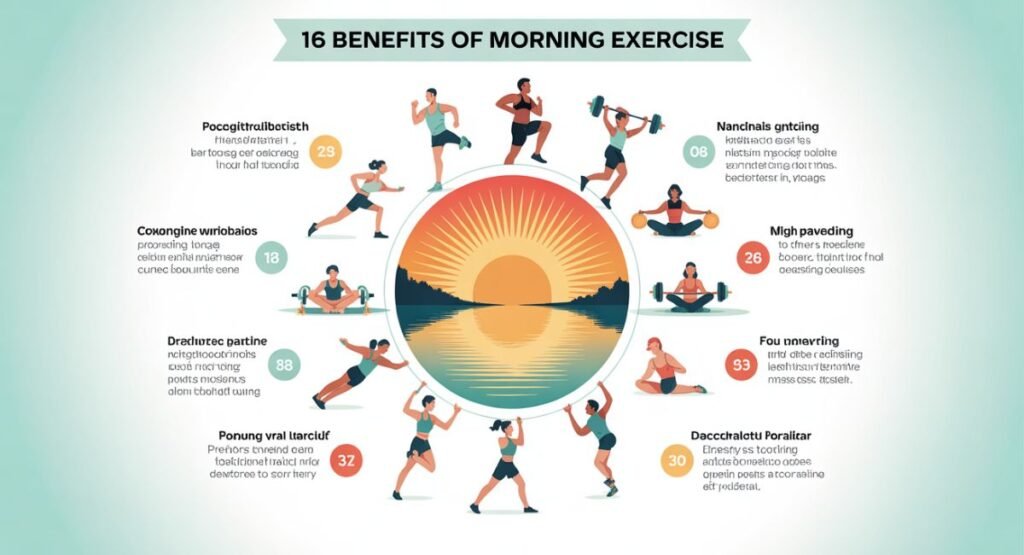Introduction
Vitamin D is a fat-soluble vitamin essential for your health. Your body can make it when sunlight touches your skin. You also get it from food, fortified foods, and supplements. It plays a major role in many systems of the body.
The role of vitamin D in health goes far beyond bones. It supports your immune system, controls calcium absorption, and keeps your muscles working properly. This guide will help you understand why it matters and how to make sure you’re getting enough.

What are vitamin D supplements and deficiency symptoms?
Vitamin D comes in two forms: cholecalciferol (D3) and ergocalciferol (D2). D3 is made in your skin with sun exposure, while D2 comes from plants and fungi. Both are dietary sources of vitamin D, but D3 is more effective in raising your serum 25(OH)D levels.
Why is it Essential for the Body?
Vitamin D helps your body use calcium and phosphorus for strong bones. Without it, bones become soft or brittle. It also supports your immune system, mood, and metabolism. Low levels are linked to depression, fatigue, and infection risk.
Recommended Daily Intake by Age & Gender
Your age and gender matter when it comes to vitamin D intake guidelines. The recommended dietary allowance (RDA) is different for each group. Children, adults, and seniors all need enough vitamin D for growth, health, and osteoporosis prevention.
Here’s a table based on U.S. recommendations. :
| Age Group | RDA (IU/day) |
| Infants (0-12 months) | 400 IU |
| Children (1–18 years) | 600 IU |
| Adults (19–70 years) | 600 IU |
| Adults 71+ years | 800 IU |
| Pregnant/Lactating Women | 600–800 IU |

Children, Adults, Seniors
Should children take vitamin D? Yes. Their growing bones need it to stay strong. Adults need enough to prevent bone loss, and older adults need more due to lower vitamin D metabolism. Without it, bones weaken and fractures become common.
Pregnant & Lactating Women
Pregnancy increases the need for vitamin D. It supports the baby’s bone development and strengthens the vitamin D and immune system of both mother and child. Many women take a vitamin D supplement during pregnancy to meet their daily needs.
Top Sources of Vitamin D
Your body makes vitamin D from sunlight, but not everyone gets enough sun. That’s why dietary sources of vitamin D are important. You can get it from food and supplements too.
Sunlight Exposure
Is sunlight enough for vitamin D? In summer, 10–15 minutes of daily sun on your arms and legs may be enough. But in winter or cloudy areas, it’s not. Sun exposure and vitamin D are linked, but many Americans still fall short.
Vitamin D-rich Foods
What foods are high in vitamin D? The best options are fatty fish like salmon, egg yolks, liver, and fortified products like milk, cereal, and juice. Fortified foods help close the gap for people who don’t eat much seafood.
Supplements: D2 vs. D3
Is D3 better than D2? Yes. Studies show that cholecalciferol (D3) raises blood levels better than ergocalciferol (D2). D3 is closer to the type your body makes with sunlight and stays in your system longer.
Signs & Symptoms of Vitamin D Deficiency
Vitamin D deficiency can show up in many ways. You might feel tired, weak, or have frequent colds. In kids, it causes rickets. In adults, it can lead to bone health problems and muscle pain.
Physical Symptoms in Adults & Children
What are symptoms of vitamin D deficiency? D They include fatigue, back pain, weak bones, muscle cramps, and slow healing. Children may have bowed legs or soft skulls.
Mental Health Links
Does vitamin D affect mood or depression? Yes. Low levels are linked to depression, anxiety, and brain fog. People with mental health issues often have low serum 25(OH)D levels.
Hidden or Mild Deficiency Signs
You might not even notice a mild vitamin D deficiency. Frequent illness, low energy, or poor sleep could be warning signs. Getting tested is the only way to know.
Who Is at Risk for Vitamin D Deficiency?
Some people can’t get enough vitamin D, no matter what. These groups at risk for vitamin D deficiency need extra care and often require supplements or blood tests.
Infants and Breastfed Babies
Breast milk is low in vitamin D. Should children take vitamin D? Yes, especially if they’re breastfed. Pediatricians recommend 400 IU per day as a supplement.
Elderly and Housebound People
Older adults have thinner skin and often stay indoors. Their bodies don’t produce enough vitamin D, making them more prone to falls and fractures.
Dark-skinned Individuals
Melanin blocks UVB rays. People with dark skin need more sun to make the same amount of vitamin D. Many need a vitamin D supplement year-round.
Obesity, Fat Malabsorption, Gastric Surgery
Vitamin D is a fat-soluble vitamin. People with fat absorption issues or those who’ve had weight-loss surgery may struggle to absorb it.
People with Liver/Kidney Disease
Vitamin D must be activated in the liver and kidneys. Disease in these organs blocks vitamin D metabolism, increasing deficiency risk.
Health Conditions Linked to Vitamin D
Researchers have linked low vitamin D to many health problems. From fragile bones to heart issues, the role of vitamin D in health is wide-reaching.

Bone Health & Osteoporosis
Can vitamin D help with bone strength? Absolutely. It helps you absorb calcium and protects you from fractures. Bone health and vitamin D are deeply connected.
Clinical Trials in Seniors
A review of studies shows that supplements can improve bone density in seniors. It may also reduce fall risk, but only when calcium is included.
Depression & Mood Disorders
Vitamin D and depression are closely linked. It supports brain health and neurotransmitter function. Supplementing may improve mood in those who are low.
Heart Disease & High Blood Pressure
Is vitamin D good for heart health? Studies suggest a possible connection. Deficiency is linked to stiff arteries and higher blood pressure.
Autoimmune Diseases (MS, Type 1)
Low vitamin D may increase the risk of multiple sclerosis and type 1 diabetes. It helps regulate immune responses and may lower inflammation.
Cancer Prevention Research
There’s growing interest in vitamin D’s role in cancer prevention. High levels might lower the risk of colon and breast cancer, but evidence is still emerging.
Type 2 Diabetes & Insulin Resistance
Vitamin D helps regulate insulin. People with low levels often have poor blood sugar control. Supplementing might help prevent or delay type 2 diabetes.
Weight Loss & Fat Metabolism
Some studies link higher vitamin D to easier weight loss. It may improve fat metabolism, especially in those who are overweight.
Dangers of Too Much Vitamin D
Can too much of a good thing become bad? Yes. Vitamin D toxicity is rare but serious. It usually happens from taking too many supplements.
Toxicity Symptoms
Can I overdose on vitamin D? Yes. Symptoms include nausea, vomiting, weakness, and kidney problems. It raises blood calcium levels dangerously.
Risk of Kidney Stones or Damage
Excess vitamin D increases calcium in your urine. This may lead to kidney stones or damage. Always follow the recommended limit.
Medication Interactions
Some drugs interfere with how your body absorbs or processes vitamin D. Others may increase your need for it. Talk to your doctor if you take medication.
Orlistat & Fat Absorption
Orlistat reduces fat absorption, but it also blocks fat-soluble vitamins like vitamin D. People on it often need extra supplements.
Statins & Liver Metabolism
Statins can interfere with vitamin D metabolism in the liver. They may reduce blood levels over time.
Steroids & Hormone Interference
Steroids affect calcium and vitamin D. Long-term use can lead to bone loss and deficiency.
Diuretics & Calcium Retention
Some diuretics raise calcium levels. Combined with D supplements, this could lead to complications like kidney damage.
Tips for a Vitamin D Healthy Lifestyle
It’s not hard to maintain healthy D levels. You just need some sun, the right foods, and smart supplement habits.

Balancing Sun & Skin Safety
Sun exposure and vitamin D are vital, but don’t overdo it. Try 10–15 minutes of morning sun. Use sunscreen after that to prevent skin damage.
Dietary Habits & Fortified Foods
Include fortified foods like milk, cereal, and orange juice in your meals. They help meet your needs without effort.
When and How to Supplement
The best time to take vitamin D supplements is with your biggest meal. Fat improves absorption. Choose D3 unless your doctor says otherwise.
FAQs
How long does it take to correct a deficiency?
It usually takes 2–3 months with the right dose. Blood levels should be rechecked to make sure they’ve improved.
Can you get vitamin D through a window?
No. Glass blocks the UVB rays needed to make vitamin D. Go outside for best results.
What’s the best time to take supplements?
The best time to take vitamin D supplements is with a meal containing fat. This boosts your body’s ability to absorb it.
Can vitamin D boost immunity?
Yes. Vitamin D and the immune system are connected. It helps your body fight infections, especially respiratory ones.
Should I test my levels regularly?
Yes, especially if you’re in a group at risk for vitamin D deficiency. Ask your doctor for a serum 25(OH)D level test.




Pingback: 15 Surprising Benefits Of A Healthy Lifestyle: